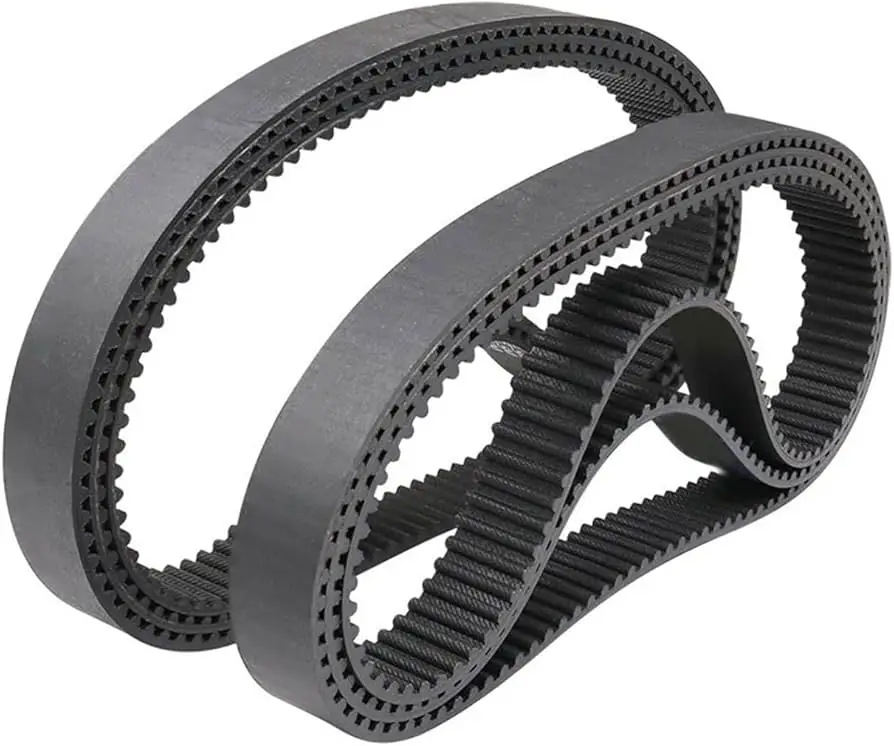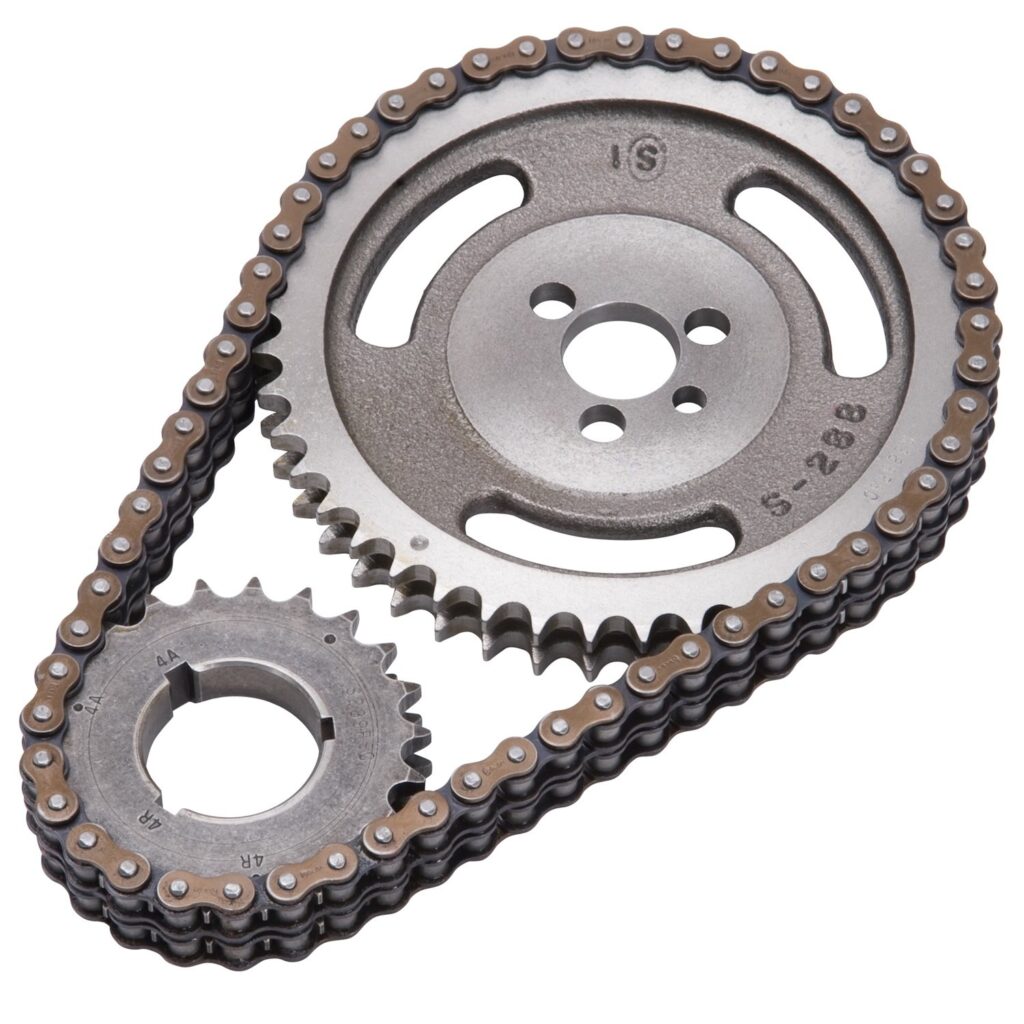A timing belt is a rubber component that needs frequent replacement, while a timing chain is metal, more durable, and lasts longer. Timing belts are quieter, but timing chains are found in larger engines and are more expensive to repair.
When it comes to maintaining your car’s engine, one of the most important components to consider is the timing system, which includes either a timing belt or a timing chain. These components are essential for keeping your engine running smoothly by ensuring that the camshaft and crankshaft are properly synchronized. Despite their similar functions, timing belts and timing chains differ significantly in terms of design, maintenance, durability, and cost.
In this blog post, we will compare timing belts vs timing chains, explain the differences, and answer frequently asked questions to help you understand which option is best for the vehicle.
Contents
What is a Timing Belt?
A timing belt is a toothed, rubber belt that connects the camshaft and crankshaft in the engine. It ensures that the two components rotate in sync, allowing for the proper timing of the engine’s valves and pistons. Timing belts are used in many modern engines, especially those with smaller, more compact designs. The rubber construction of the timing belt allows it to be quieter, lighter, and less expensive to produce.

Advantages of Timing Belts
Compared to alternative systems like timing chains or gears, timing belts offer several distinct advantages:
- Cost-Effective: Timing belts are generally cheaper to manufacture and replace.
- Lightweight: The rubber construction makes them lighter than timing chains, which can improve overall fuel efficiency.
- Quieter Operation: Timing belts tend to operate more quietly compared to chains.
Disadvantages of Timing Belts
While timing belts are a popular choice in modern engine systems, they have some drawbacks compared to alternatives like timing chains or gears. Here’s a detailed look at the disadvantages of timing belts:
- Shorter Lifespan: Timing belts typically need to be replaced every 60,000 to 100,000 miles, depending on the vehicle and manufacturer recommendations.
- Vulnerability to Wear and Tear: Rubber timing belts can stretch, crack, or even break over time due to heat and friction, which can lead to engine damage if not replaced on time.
- Requires Regular Maintenance: Due to the shorter lifespan, timing belts need more frequent inspections and replacements.
What is a Timing Chain?
A timing chain, on the other hand, is made of metal and resembles a chain you might find in a bicycle. It links the camshaft and crankshaft, ensuring that they rotate together in sync. Timing chains are generally found in larger, more powerful engines, including those in many trucks and SUVs. The chain’s metal construction makes it more durable and long-lasting than a rubber timing belt.
Advantages of Timing Chains
Timing chains are a robust alternative to timing belts, offering several benefits that make them a preferred choice in many modern and high-performance engines. Here’s a detailed look at their advantages:
- Longer Lifespan: Timing chains can last the lifetime of the engine and typically don’t require frequent replacement.
- Durability: The metal construction of timing chains makes them less prone to wear and tear compared to timing belts.
- No Regular Replacement Required: Unlike timing belts, timing chains don’t need to be replaced every 60,000 to 100,000 miles.
Disadvantages of Timing Chains
While timing chains are known for their durability and reliability, they come with some disadvantages that may influence a vehicle owner’s decision. Here’s an overview of the potential downsides of timing chains:
- Costly Repairs: While timing chains don’t need to be replaced as often, when they do fail, the repairs are significantly more expensive than those for timing belts.
- Heavier and Noisier: Timing chains are heavier and tend to make more noise during operation compared to the quieter timing belt.
- Require Regular Maintenance: Although they last longer, timing chains still require proper maintenance to ensure they don’t stretch or become loose.

Key Differences Between Timing Belt VS Timing Chain
Here are a comparison table of timing belt VS timing chain –
| Feature | Timing Belt | Timing Chain |
|---|---|---|
| Material | Rubber | Metal |
| Lifespan | 60,000 to 100,000 miles | Typically lasts the life of the engine |
| Maintenance Frequency | Requires regular replacement | Requires less frequent replacement |
| Noise | Quieter | Noisier |
| Cost | Cheaper to replace | More expensive to repair or replace |
| Durability | Less durable, prone to wear | More durable and resistant to wear |
| Weight | Lighter | Heavier |
| Failure Risk | Higher risk of failure if not replaced on time | Less prone to failure, but expensive to repair when it does |
| Typical Use | Smaller, economy vehicles | Larger, more powerful engines |
Timing Belt vs Timing Chain: Which One Is Right for Your Vehicle?
The choice between a timing belt and a timing chain often comes down to the type of vehicle you own, its engine size, and your budget for maintenance. Here are some key factors to consider:
- Engine Type: Timing belts are often found in smaller, more fuel-efficient vehicles, while timing chains are commonly used in larger engines, especially in trucks, SUVs, and performance cars.
- Maintenance Budget: If you want to avoid frequent maintenance costs, a vehicle with a timing chain might be the better choice since it typically requires fewer replacements.
- Long-Term Ownership: If you plan to keep your vehicle for a long time, you may prefer a car with a timing chain since it’s built to last the entire lifespan of the engine.
- Cost of Repair: Timing chains are generally more expensive to replace, but they require fewer replacements, while timing belts need to be replaced more often but are cheaper to repair.
Frequently Asked Questions
Here are some FAQs about timing belt vs timing chain –
1. How often should I replace my timing belt?
Timing belts typically need to be replaced every 60,000 to 100,000 miles, depending on the vehicle. It’s important to follow the manufacturer’s recommendations for your car.
2. Can I drive with a broken timing belt or timing chain?
No, driving with a broken timing belt or chain can cause significant engine damage. If your timing belt or chain fails, your engine could be seriously damaged, and repairs can be very expensive.
3. Which is more expensive to replace, a timing belt or a timing chain?
Timing chains are generally more expensive to replace due to their complexity and labor costs. However, they last much longer than timing belts, which need more frequent replacement.
4. How can I tell if my timing belt or timing chain is worn out?
Signs of a worn-out timing belt include unusual engine noises, difficulty starting the engine, or the engine stalling. For timing chains, symptoms of wear can include rattling noises and poor engine performance.
5. Is it better to have a timing belt or a timing chain?
It depends on your specific needs and the type of vehicle you own. Timing chains are more durable and require less frequent maintenance, but they are more expensive to repair. Timing belts are cheaper but require more regular replacement.
Conclusion
Choosing between a timing belt and a timing chain comes down to understanding the pros and cons of each system. Timing belts are ideal for smaller, more affordable engines, while timing chains are typically found in larger, more powerful engines. While timing chains tend to last longer, timing belts are less expensive to replace, making them a more economical option for many drivers.
Whether you’re maintaining your car or buying a new one, understanding the differences between these two important components will help you make an informed decision about your vehicle’s engine needs.